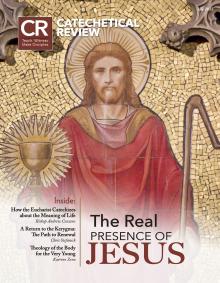In modern culture, relativism reigns supreme. Consequently, the transcendentals of truth, goodness, and beauty no longer seem to transcend beyond the subjective whims of every autonomous individual self. Truth is a matter of one’s opinion. Goodness is relative to each person. Beauty is a matter of personal preference.
Catechists and Catholic educators have been given a great opportunity to lead the young people entrusted to their care to encounter objective truth, consistent moral laws that lead to the flourishing of goodness, and to appreciate authentic beauty. Although the three transcendentals are inseparable, I would like to focus on the role of beauty in teaching, evangelization, and formation.
Bishop Robert Barron frequently exhorts the faithful to “lead with beauty.” Images are powerful means of conveying both the truth and distortions of the truth. Images have been used well to market products and lead people astray into ideology. The Church has employed the use of sacred art to convey the truth in a powerful and formative way. In the introduction to the Compendium of the Catechism of the Catholic Church, then-Cardinal Joseph Ratzinger explains the rationale for using sacred images within the Compendium:
Images are also a preaching of the Gospel. Artists in every age have offered the principal facts of the mystery of salvation to the contemplation and wonder of believers by presenting them in the splendor of color and in the perfection of beauty. It is an indication of how today more than ever, in a culture of images, a sacred image can express much more than what can be said in words, and be an extremely effective and dynamic way of communicating the Gospel message.[1]
The beauty within art, architecture, music, and film is a visible manifestation of a truth being communicated by the artist. Beauty, when used well, can lead the faithful to encounter the face of Christ the Incarnate Word.
In order to renew catechesis and Catholic schools with beauty, first we must discuss the definition and nature of beauty. Second, we need to examine what role beauty plays in our lectures, presentations, and classrooms. Finally, we must work toward greater manifestations of beauty within the liturgy.
The rest of this online article is available for current Guild members.
This article is from The Catechetical Review (Online Edition ISSN 2379-6324) and may be copied for catechetical purposes only. It may not be reprinted in another published work without the permission of The Catechetical Review by contacting [email protected]

















